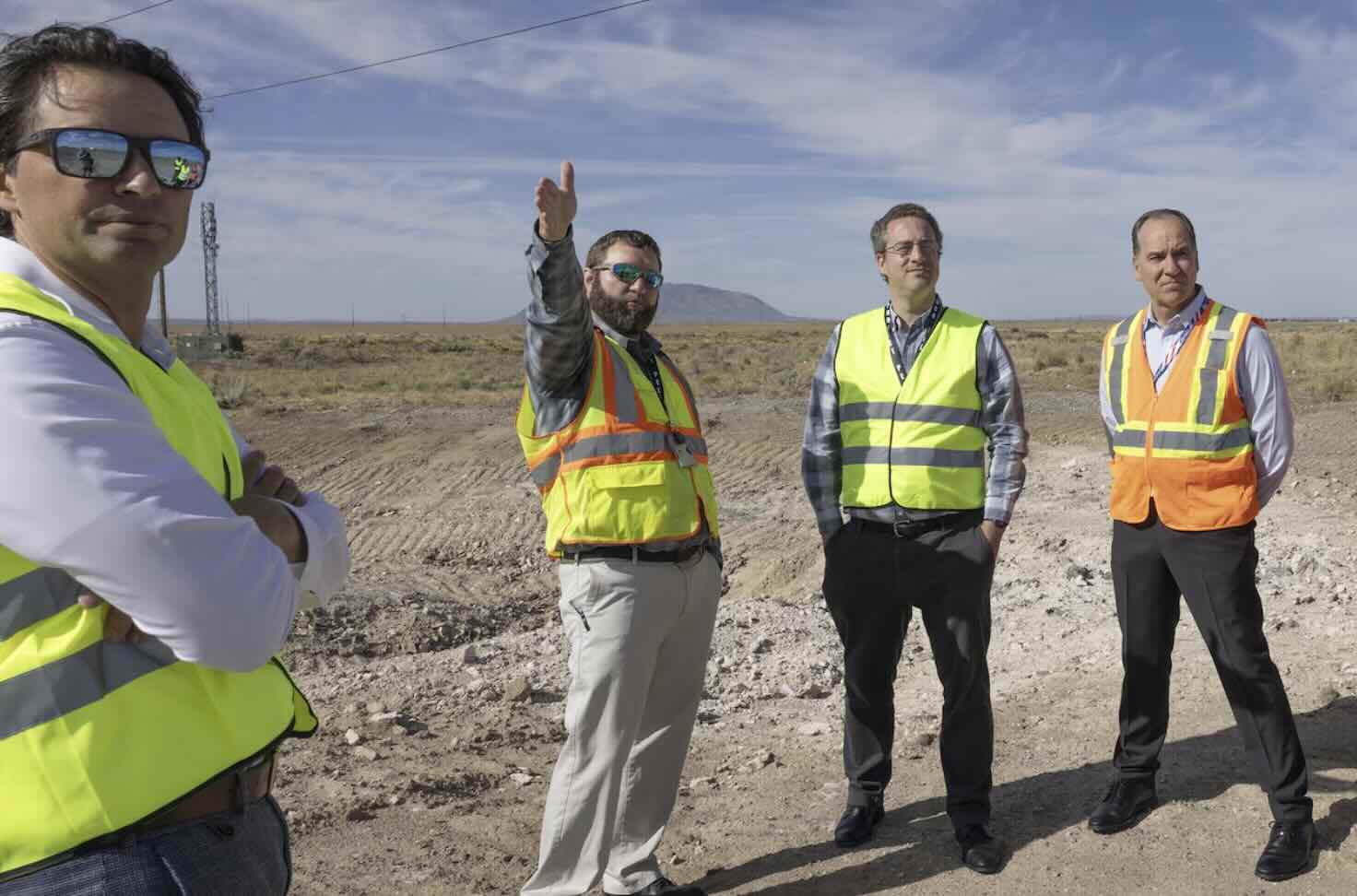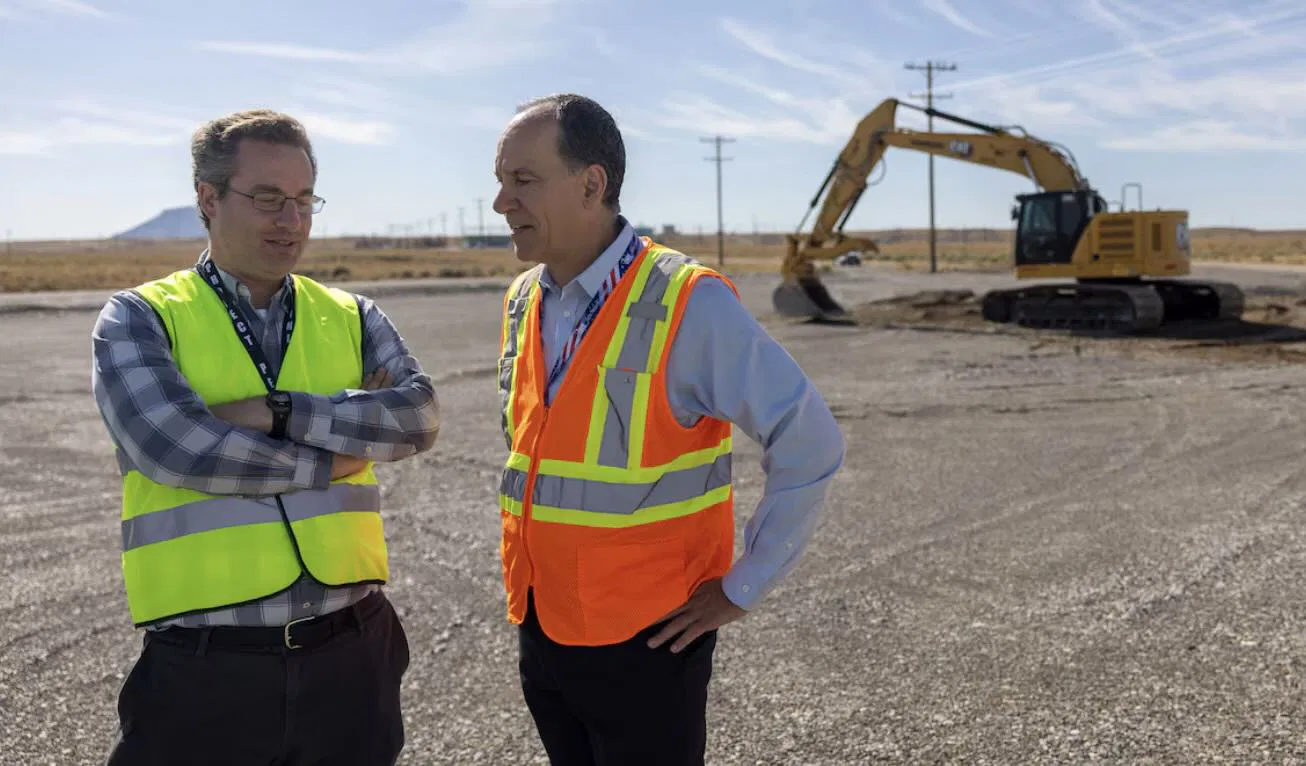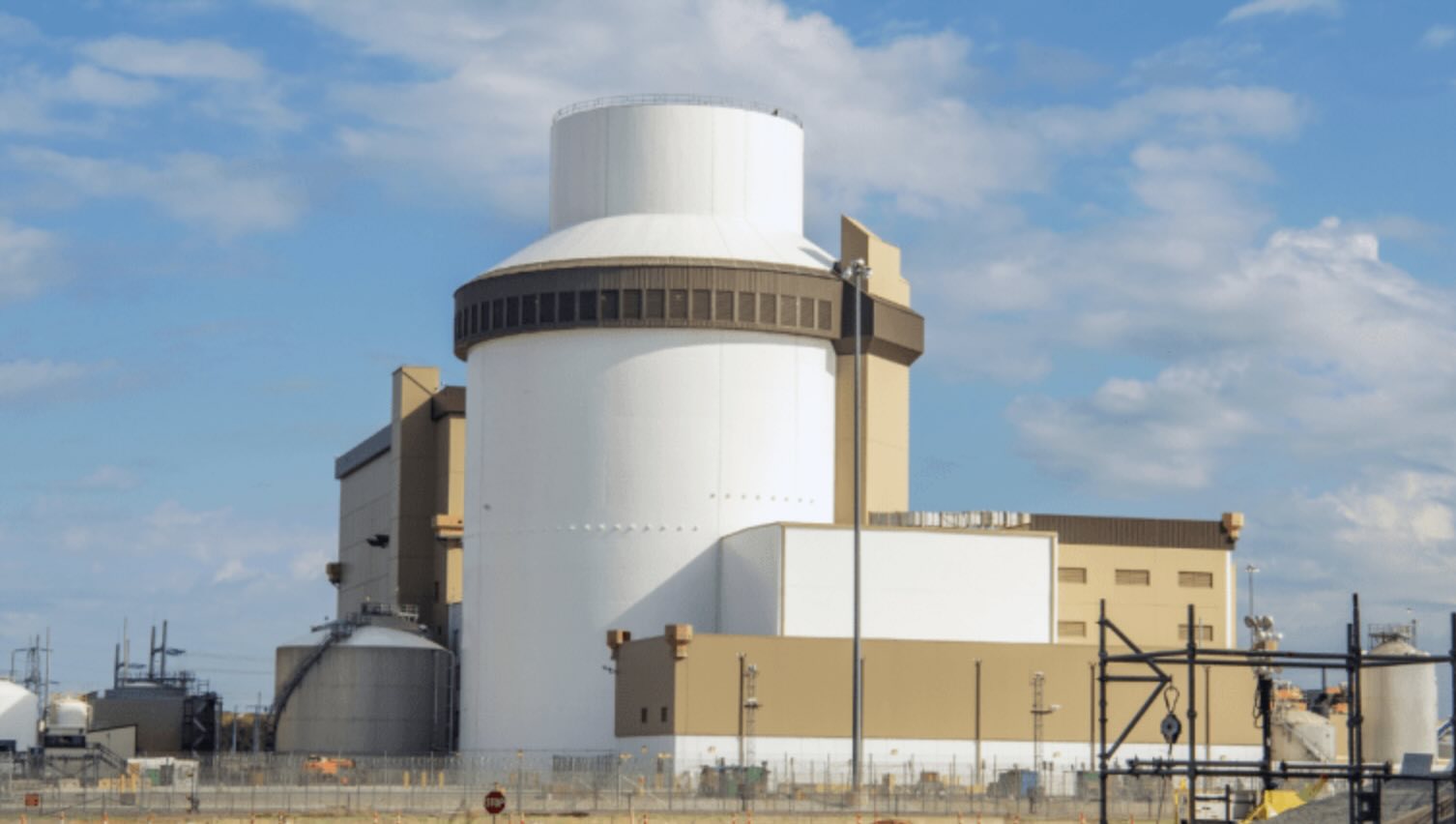

Welcome to this installment of The Intelligence Brief… this week, the U.S. Department of Defense revealed its new plans to construct a transportable nuclear reactor under its new Project Pele program. In our breakdown, we’ll be looking at 1) what the DoD announced about the new program and its focus for the years ahead, 2) how the first implementation of a Generation IV reactor could set a new precedent in nuclear power production, 3) other notable advanced nuclear reactor projects that are currently underway, and 4) what’s on the horizon for Project Pele as the ambitious new program gets underway.
Quote of the Week
Nuclear power is a young technology – there’s so much more to be discovered. That’s what makes it so exciting to me. Yes, there are problems, but innovative people are going to be able to come up with solutions and bring the technology to its full potential.
– Leslie Dewan
Latest News: In recent articles at The Debrief, a team of archaeologists using advanced AI software have identified more than 300 previously identified Nazca Lines geoglyphs. Also, astronomers have revealed that an additional “mini-moon” will briefly enter an orbit around Earth in the days ahead. As always, you’ll find links to all our recent stories at the end of this week’s newsletter.
Podcasts: In podcasts this week, on The Micah Hanks Program, Tim McMillan and I sit down with Salvatore Pais to discuss the controversial U.S. Navy patents he produced which appear to resemble UAPs and other sci-fi technologies. Elsewhere, on the latest installment of The Debrief Weekly Report, Kenna and Stephanie take a deep dive into strange behavior that has now been observed in eels, and the science of out-of-body experience. You can catch up on past episodes over on The Debrief’s Podcasts Page.
Video News: On the latest episode of Rebelliously Curious, Chrissy Newton is joined by Dr. Matthew Halsted, a professor at Eternity Bible College in California, to explore the complex intersection of faith, theology, and the unexplained. Be sure to check out other great content from The Debrief on our official YouTube Channel.
With that all behind us, it’s time to examine the Pentagon’s announcement this week that it intends to construct a portable nuclear reactor. This represents a potential game-changer for the DoD and its efforts.
The DoD Announces Efforts to Build a Transportable Nuclear Reactor
This week, the U.S. Department of Defense announced that it had officially begun construction on Project Pele, a pioneering transportable nuclear reactor.
The project, based out of Idaho National Laboratory (INL), marks a new milestone for the U.S.’s ambitions to advance its energy capabilities by producing novel power systems.
The announcement arrives amid several recent energy developments, including the development of the first new commercial nuclear reactors to be connected to the U.S. power grid in years and the ongoing development of advanced reactor demonstration projects by several government and commercial groups.
Project Pele: What We Know
Project Pele is poised to be the first Generation IV reactor to generate electricity in the U.S. It is being developed under the Strategic Capabilities Office (SCO) initiative and managed by BWXT Advanced Technologies, LLC.
Based on information released by the DoD earlier this week, the project’s scope involves constructing a mobile nuclear power system that can be contained within four shipping containers. The unit is designed for reliable and clean carbon-free power production, even in otherwise inaccessible areas. Although the project was announced this week, the official assembly of the device will not begin until next year, with initial testing in 2026.


The ambitious project is an outgrowth of the DoD’s cooperation with the U.S. Department of Energy (DoE) and INL and aspires to set a new precedent in the development and regulation of advanced nuclear technologies.
“We are thrilled to move beyond the era of PowerPoint advanced reactors,” said Dr. Jeff Waksman, program manager for Project Pele, earlier this week, also noting that the initiative marks a departure from theoretical designs, moving into the realm of real-world application.
Transportable Nuclear Power
The most obvious advantage Project Pele puts forward is the promise of portable nuclear power. Once it is built, the reactor will be contained within a concrete shielding structure at its INL test site, after which it will be connected to the INL’s microgrid system to facilitate in-depth testing of its capabilities.
If all goes according to plan, Project Pele represents a potential game-changer for the Pentagon. It would enable the availability of carbon-neutral energy capabilities at virtually any location, powering the DoD’s most mission-critical efforts and operations.
SCO director Jay Dryer described Project Pele as a crucial initiative for advancing U.S. energy resilience, calling it “a key initiative for improving DoD energy resilience and will also play a crucial role in advancing nuclear power technology for civilian applications.”
Advanced Reactors and More on the Horizon
The announcement of Project Pele arrives amid several notable developments in nuclear power. These include the connection of Plant Vogtle Unit 3 to the U.S. electric grid, making it the second in more than two decades.


Currently, the (DOE) is also working to advance domestic production of high-assay low-enriched uranium (HALEU) to support additional advanced reactor projects, while companies like TerraPower and X-energy are working to develop advanced reactor demonstration projects within the commercial sector. Last year, it was announced that NuScale Power Corporation, a private company, awaited word on the Nuclear Regulatory Commission’s (NRC) final ruling on its design of a small modular reactor (SMR).
Other efforts include New York’s Nine Mile Point Nuclear Generating Station, which will likely serve as the starting point for additional plans the DoE is pursuing to establish regional hydrogen hubs to promote nuclear-powered hydrogen production.
Going Forward
With input from the Department of Energy, the National Nuclear Security Administration, and the Nuclear Regulatory Commission, along with industry names such as Northrop Grumman, Rolls Royce Liberty Works, and Torch Technologies among its collaborators, Project Pele is very much a whole-government effort.
In a statement issued this week, INL Director Dr. John Wagner said that he and the project team expect Project Pele “will be among the first of a new generation of advanced experimental reactors hosted here before the end of the decade.”
The program’s success will not only set a new precedent for the DoD and its operations but also set the course for similar efforts involving the production, containment, and transport of clean energy systems in the coming decades.
That concludes this week’s installment of The Intelligence Brief. You can read past editions of The Intelligence Brief at our website, or if you found this installment online, don’t forget to subscribe and get future email editions from us here. Also, if you have a tip or other information you’d like to send along directly to me, you can email me at micah [@] thedebrief [dot] org, or Tweet at me @MicahHanks.


Here are the top stories we’re covering right now…
- James Webb Space Telescope Creates Three-Dimensional Map of Planet’s ‘Puffed-Up’ Atmosphere
Astronomers have created a three-dimensional map of WASP_107b’s ‘puffed-up’ atmosphere using NASA’s James Webb Space Telescope.
- DARPA Has a “Weird” Plan to Aid People in Authoritarian Regimes Using Hidden Networks
DARPA seeks to aid those living under authoritarian regimes by making the future deployment and detection of hidden networks “weird.”
- New Evidence Reveals 16th-Century Spies With ‘Eyes Everywhere’ Infiltrated ‘Stranger Churches’
New research into the ‘Stranger Churches’ of 16th-century England shows a shady world of multilingual spies, espionage, and counterespionage.
- NASA’s Perseverance Rover Makes Unprecedented Discovery of Bizarre ‘Freya Castle’ Rock on Mars
NASA’s Perseverance Rover has made a striking discovery, dubbed “Freya Castle,” that is unlike anything previously seen on the Red Planet.
- Hardy, Radiation-Resistant Organism Could Rewrite Your Genetic Code to Cure High Cholesterol
Scientists have developed a powerful new gene editing tool that could one day rewrite the human genetic code to cure high cholesterol.
- Look: Over 300 New ‘Nazca Lines’ Geoglyphs Have Been Revealed by AI
A team of archaeologists using advanced AI software have identified over 300 previously identified Nazca Lines geoglyphs.
- Earth Will Temporarily Have a “Mini-Moon” in Its Orbit Until Late November
Astronomers have revealed that an additional “mini-moon,” asteroid 2024 PT5, will briefly enter an orbit around Earth in the days ahead.
- UAP: Faith, Theology, and the Unexplained
Chrissy Newton is joined by Dr. Matthew Halsted, a professor at Eternity Bible College in California, to explore the complex intersection of faith, theology, and the unexplained.
- Concerns Over Unauthorized UAS Incidents Prompt New International Defense Collaboration
A new international initiative aims to mitigate concerns from unauthorized incursions by unmanned aerial systems (UAS) with new counter-drone technologies.
- What’s That in the Desert? ESA Satellite Captures Incredible Images of Iconic Event as Seen from Orbit
A satellite operated by the European Space Agency (ESA) has captured incredible images of an iconic annual event in the Black Rock Desert.
- “Hellish Landscape” of Jupiter’s Moon Io Enhances Case for Life on the Planet’s Icy Moons
Cornell University astronomers studying Jupiter’s moon Io say tidal heating may help support life in the oceans of Jupiter’s icy moons.
- Scents and the City: This Group is Creating an “Aroma Archive” for Cultural Preservation Through Scent Digitization
The Digital Olfaction Society (DOS) is leading an ambitious global project to capture and archive the scents of diverse locations.
- MIT Engineers Create 3D Printable Glass Bricks That Can Withstand the Same Pressures as Concrete Blocks
A team of MIT engineers have invented a recyclable glass brick that can withstand similar pressures as a standard concrete block.
- Donald Trump Reveals He Interviewed U.S. Military Pilots Who Encountered Round UFO “They Cannot Explain”
Donald Trump reportedly interviewed several U.S. military pilots about their firsthand UFO encounters while in office, the former President recently revealed.
- Mysterious Dark Energy May Solve Two Cosmic Mysteries, Say MIT Scientists
MIT scientists say that dark energy could be the missing factor that explains some of the most perplexing phenomena in the universe.
- 20 Mysterious, Large-Scale Structures Found Hidden Beneath an Ancient ‘Lost’ Ocean on Mars
Scientists creating a gravity map of Mars have discovered the presence of mysterious large-scale structures hidden beneath a lost ocean.
- People With Different Political Ideologies Have Slightly Different Brain Structures, Scientists Reveal
New findings reveal differences in the brains of certain political ideologies and their counterparts on the opposite end of the political spectrum.
- Forget Melatonin Supplements? LED Light with ‘Sky’s Splendid Hues’ Could Reset Circadian Body Clocks
An LED light that alternates between red and blue 19 times a second could advance melatonin production and reset the body’s internal clock.
- New Insights Challenge Idea of Violent Conflict in Iberia During Transition from Copper to Bronze Age
New findings propose a less violent explanation for the rapid demographic changes in southern Spain between the Copper and Bronze Ages than previously thought.
- Pager and Walkie-Talkie Blasts Rock Lebanon in Unprecedented Wave of Attacks
This week, we examine the recent pager explosions in the Middle East, which have reignited concerns about further escalation in the region.
- Skinwalker Ranch: Visit to a Notorious UAP Hotspot
This week we discuss Micah’s recent trip to the famous Skinwalker Ranch, along with an analysis of the strange happenings that are purportedly connected with the location.
- The Great Eel-scape This week on The Debrief Weekly Report…
On this week’s episode, Kenna and Stephanie slay while discussing how the popular role playing game Dungeons and Dragons can positively impact people with autism. Following a close call with a troll, they discuss the science behind “out of body experiences.” The two hosts then swarm a new study concerning Japanese eels, and the long awaited video evidence that the creatures have evolved a method to escape the stomachs of their predators after they have been eaten.
- Elon Musk’s Neuralink Receives FDA Breakthrough Designation for ‘Blindsight’ Implant Aiming to Restore Vision
Neuralink, Elon Musk’s brain-computer interface (BCI) company, has received the FDA’s “breakthrough device” designation for its innovative ‘Blindsight’ implant.
- Bio-Inspired ‘Cat’s Eye’ Camera Can See Through Background Camouflage and in Low Light Conditions
Korean researchers have invented a ‘cat’s eye’ camera that sees in low light conditions and distinguishes objects from background camouflage.
- New MIT Study Suggests Mars Could Be the Key to Unveiling Primordial Black Holes and the Mystery of Dark Matter
Physicists from MIT suggests looking to Mars as a novel way to find evidence of primordial black holes and dark matter.
- 200-Year-Old South African Cave Painting May Depict an Animal Extinct for Over 200 Million Years
Researchers say this 200-year-old South African cave painting likely depicts an animal that has been dead for over 200 million years.
- Astronomers Detect Massive 23 Million Light-Year Wide Megastructure, Revealing Largest Black Hole Jets Ever Seen
In a breakthrough discovery, astronomers report the detection of the largest pair of black hole jets ever observed, which span an incredible distance of 23 million light years.
